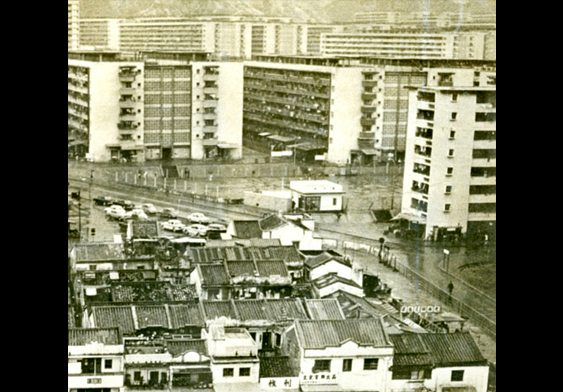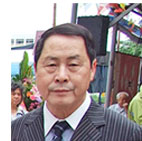
Pei Pin Street in the late 1960s
Between the end of World War II in 1945 and the late 1960s, many Hoklo people from Haifeng arrived in Hong Kong building and living in houses in Pei Pin Street (bottom right). This picture shows Pei Pin Street as it looked in 1969-Extract from a ISD photo
Pei Pin Street in the late 1960s
Between the end of World War II in 1945 and the late 1960s, many Hoklo people from Haifeng arrived in Hong Kong building and living in houses in Pei Pin Street (bottom right). This picture shows Pei Pin Street as it looked in 1969-Extract from a ISD photo
Pei Pin Street’s squatters often suffered in the wind and rain
Ma Sui Wai's family built their houses in Pei Pin Street. Their 400- to 500-sq-ft home on had a square layout. There were three bedrooms and one living room where friends and relatives would sleep on the floor during their short stay in their home. There was also a kitchen and a pit toilet. A public pit toilet built of wood was also provided by the government on the open space between the houses. The hut was mainly built of wood planks and iron sheets. It was terrible on windy days when the hut swayed. Besides, there was the problem of flooding. Ma Sui Wai remembered that when it was announced on the radio that the typhoon signal would soon reach No. 8 or higher, his father and relatives would dangle several pieces of granite stones from the roof with ropes to prevent the roof from being blown away. One some occasions, however, the roof was partly destroyed inevitably.


 BACK
BACK  CLOSE
CLOSE 